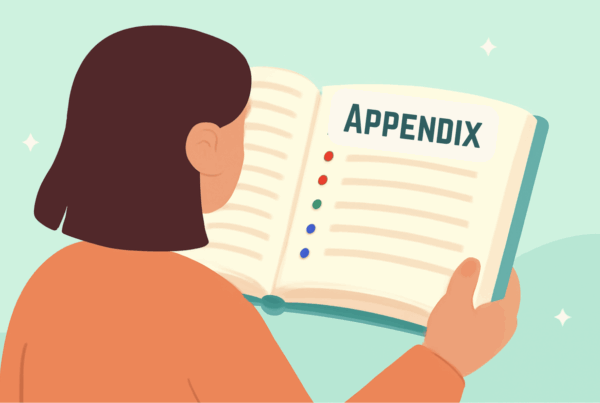Audiobooks are taking the publishing world by storm, especially for those of us who love to listen to books on the go. Whether you’re commuting, exercising, or multitasking, audiobooks offer the perfect way to enjoy literature anytime, anywhere. Converting your eBooks into audiobooks isn’t just about convenience—it’s about tapping into a broader audience, boosting sales, and creating an additional revenue stream. Plus, it’s a fantastic way to make your work more accessible to visually impaired individuals.
In this article, we’ll guide you through the best practices for converting eBooks to audiobooks. You’ll learn everything from choosing the right narrator to editing and producing top-notch audio files. Follow these tips, and your audiobook will shine in the competitive market, providing your listeners with a seamless and enjoyable experience. Let’s dive in and transform your eBook into an audiobook sensation!
The Audiobook Market
The audiobook industry has seen remarkable growth, becoming a significant part of the publishing market, especially for self-publishers. Industry reports show steady, double-digit growth in audiobook sales year over year, driven by technology advancements, smartphones, and the rise of digital media.
Key demographics include diverse listeners, especially millennials and Gen Z, who appreciate the convenience of audiobooks for multitasking during commutes, workouts, or household tasks. Busy professionals and those with limited reading time also favor audiobooks.
Popular genres include fiction, self-help, and business, with many consumers listening during long commutes or while relaxing at home. For authors and publishers, converting eBooks to audiobooks opens up a growing market, attracts a broader audience, and boosts revenue by expanding your reader base.
Preparing Your eBook for Conversion
Before converting your eBook to an audiobook, you must ensure the eBook is well-formatted. Proper formatting includes consistent font styles, correct spacing, and clear chapter delineations, which facilitate a smooth transition to audio. This step is vital for maintaining the integrity of the content and ensuring the final audiobook is professional and easy to follow.
Next, thoroughly check for any potential issues in the written text. This includes proofreading for grammatical errors, typos, and inconsistencies. Ensuring the text is polished and error-free will contribute to a higher-quality audiobook and enhance the listener’s experience.
Additionally, having a high-quality PDF version of your eBook is essential. A well-prepared PDF ensures that the text appears exactly as intended, providing a reliable reference for narrators during the recording process. This also helps in maintaining the layout and structure of the book, which is important for producing a coherent and organized audiobook.
By taking these preparatory steps, you can set the foundation for a successful and seamless eBook-to-audiobook conversion process. Consider using specific download software to assist in the conversion process, such as applications for recording and editing audio.
Choosing the Right Narrator
A good audiobook narrator possesses several key qualities, including a clear and pleasant voice, the ability to convey emotions, and excellent pacing. They should be able to bring characters to life, differentiating them through distinct voices and inflections. A narrator’s articulation and pronunciation must be impeccable to ensure the listener can easily understand the text.
The impact of different voices on the listener cannot be overstated. A narrator with a dynamic and engaging voice can make the audiobook experience immersive and enjoyable. Conversely, a monotonous or unenthusiastic narrator can detract from the content, making it difficult for listeners to stay engaged. It’s important to consider the genre and tone of your book when choosing a narrator, as the right voice can enhance the storytelling and create a deeper connection with the audience.
To select the most suitable narrator for your book, start by listening to samples of their previous work. Pay attention to their ability to convey different moods and characters. Consider conducting auditions to hear how potential narrators handle specific passages from your book. Additionally, seek feedback from beta listeners who can provide insights on how the narrator’s voice complements the text.
Using Text-to-Speech Technology
Text-to-speech (TTS) technology converts written text into spoken words using computer-generated voices. TTS offers a convenient and cost-effective way to create audiobooks, especially for those with budget constraints or tight deadlines. This technology is widely accessible, with built-in TTS features available on various devices such as Android devices and Mac computers.
While TTS technology provides a quick solution for converting text to audio, it comes with its pros and cons. On the positive side, TTS is inexpensive and can produce audio content rapidly. It also offers customization options, allowing users to adjust speech rate and voice type.
However, TTS lacks the natural emotion and nuance that human narrators bring, which can make the listening experience less engaging. Additionally, TTS-generated voices may struggle with complex sentence structures and unique character voices, potentially reducing the overall quality of the audiobook. Therefore, while TTS is a viable option for some projects, human narration often remains the preferred choice for creating a more immersive and captivating audiobook experience.
Recording Your Audiobook
Creating a high-quality audiobook starts with setting up a recording environment that is free from background noise. Choose a quiet room and minimize external sounds by closing windows and doors. You can also use soundproofing materials such as foam panels or blankets to dampen noise and reduce echoes. Ensuring a controlled environment is essential for capturing clear and professional audio.
Next, gather the necessary equipment and software. A good-quality microphone is crucial; consider using a USB condenser microphone or an XLR microphone with an audio interface for optimal sound quality. Headphones are important for monitoring the recording, and a pop filter helps to minimize plosive sounds. For software, popular audio editing tools like Audacity, Adobe Audition, or GarageBand provide robust features for recording and editing your audiobook. Additionally, a few apps like Audacity, WavePad Editor, Acon Digital, Ashampoo, Ocenaudio, and Sound Forge can be very useful for recording and editing audio.
Here’s a step-by-step guide to the recording process:
- Prepare Your Script: Ensure your text is formatted for easy reading, with clear breaks for chapters and sections.
- Set Up Your Equipment: Position your microphone correctly, ensuring it is at an appropriate distance from your mouth to avoid distortion.
- Conduct a Sound Check: Record a few test sentences to check for clarity and adjust settings as needed.
- Record in Segments: Record your audiobook in manageable sections, taking breaks to maintain vocal quality and prevent fatigue.
- Monitor While Recording: Use headphones to listen to your recording in real time, catching any issues immediately.
- Edit Your Audio: After recording, use your editing software to remove mistakes, adjust volume levels, and enhance the overall sound quality.
- Save and Backup: Regularly save your work and create backups to prevent data loss.
By following these steps and using the right tools, you can produce a high-quality audiobook that will engage and captivate your audience.
Editing and Producing the Audio Files
Converting a PDF file into an audio file is essential for achieving a high-quality audiobook. It ensures clarity, consistency, and an engaging listening experience by removing errors, adjusting volume levels, and refining the overall sound. Effective editing transforms raw recordings into polished, professional audio that holds the listener’s attention.
Various tools and software can assist in this process, including Audacity, Adobe Audition, and GarageBand. These programs offer powerful features like noise reduction, equalization, and precise cutting and splicing of audio. They also provide effects to enhance sound quality and smooth transitions between sections.
To ensure a seamless listening experience, follow these tips:
- Remove Background Noise: Use noise reduction tools to eliminate unwanted sounds.
- Consistent Volume Levels: Normalize audio to maintain uniform loudness throughout the audiobook.
- Smooth Transitions: Employ crossfades between chapters to avoid abrupt changes.
- Quality Assurance: Listen to the entire audiobook to catch and correct any issues before finalizing.
By meticulously editing and producing your audio files, you can create an audiobook that is professional, engaging, and enjoyable for your audience.
Your Publishing Journey Awaits – Start NowUploading and Distributing Your Audiobook
Choosing the right platforms for uploading your audiobook is crucial for maximizing its reach. Popular platforms include Audible, Amazon, iTunes, and Google Play. These platforms provide extensive reach and established audiences, making them ideal for distributing your audiobook.
To maximize reach and sales, consider the following tips:
- Optimize Metadata: Ensure your audiobook’s title, description, and keywords are optimized for search engines to enhance discoverability.
- High-Quality Cover Art: Invest in professional cover art that is visually appealing and accurately represents your audiobook’s content.
- Promotional Pricing: Offer introductory pricing or discounts to attract initial listeners and generate buzz.
A dedicated marketing strategy is essential for the success of your audiobook. Utilize social media, email newsletters, and your author website to promote your audiobook. Engage with potential listeners through blogs, podcasts, and virtual book tours. Collect and highlight positive reviews to build credibility and encourage more sales. By combining effective distribution with a robust marketing plan, you can significantly increase the visibility and success of your audiobook.
Converting eBooks on Different Devices
Converting eBooks to audiobooks can be done easily on various devices. On the Kindle app, you can use the “Speak Screen” feature on iOS devices by swiping down with two fingers, enabling the text-to-speech functionality. Android devices offer similar capabilities with Google’s TTS engine. Additionally, apps like Voice Dream Reader and Moon+ Reader support text-to-speech on both platforms.
For a smooth conversion process, ensure your eBook is well-formatted and compatible with the device’s TTS features. Regularly update your software and test the audio output for clarity and accuracy to provide an optimal listening experience.
Final Thoughts on Converting eBooks to Audiobooks: Best Practices
Converting eBooks to audiobooks involves a few key steps: ensuring proper formatting, choosing the perfect narrator, using TTS technology when appropriate, creating a noise-free recording environment, meticulous editing, and effective distribution. By following these guidelines, you can produce a top-notch audiobook that captivates listeners and broadens your reach.
Embrace these tips to navigate the conversion process smoothly and tap into the booming audiobook market. Not only will this increase your sales potential, but it will also expand your audience, making your literary work more accessible and enjoyable for a diverse range of readers. Dive in and let your words be heard!
Convert your eBook to Audio format with Spines
Spines‘ publishing platform seamlessly transforms your eBook into an engaging audiobook using cutting-edge AI technology. This innovative feature expands your book’s reach to audiences who prefer listening to their literature. Our streamlined process ensures your manuscript transitions to a published audiobook in less than 30 days. Spines’ comprehensive plans are budget-friendly, significantly lowering industry-standard costs through AI-driven production efficiency. Enjoy dedicated support from a personal production manager throughout your publishing journey. Spines offers all necessary formats ensuring global distribution across 100+ channels, including Amazon and Barnes & Noble. Whether you’re a new writer or an established author, Spines is designed for your success in publishing. Sign up with Spines today.







